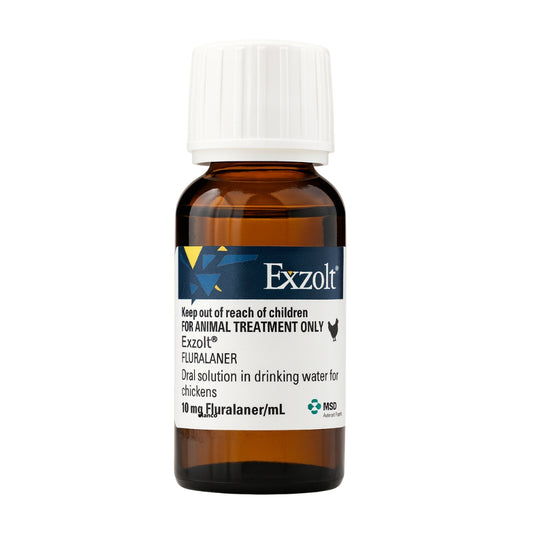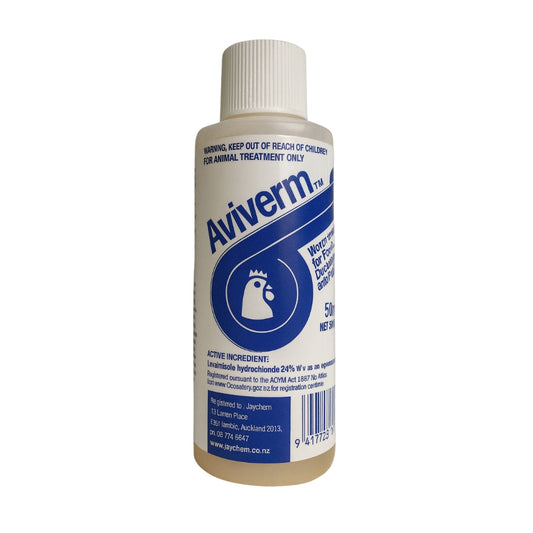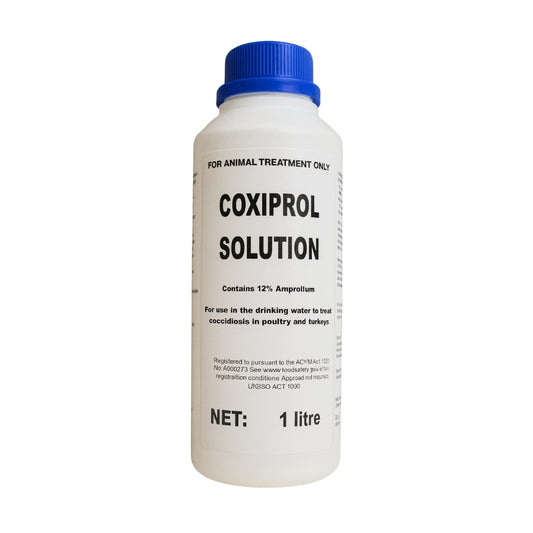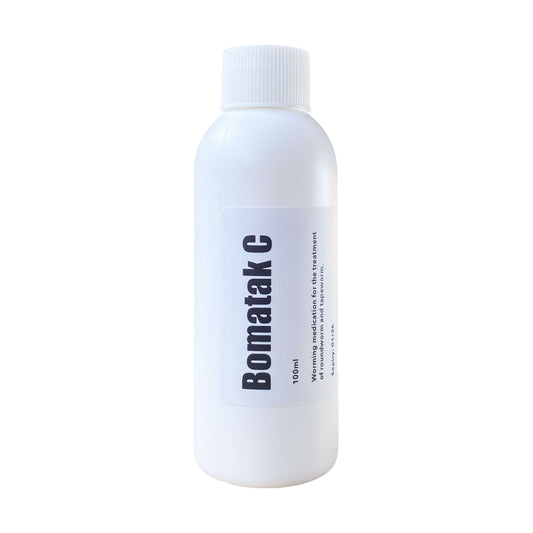
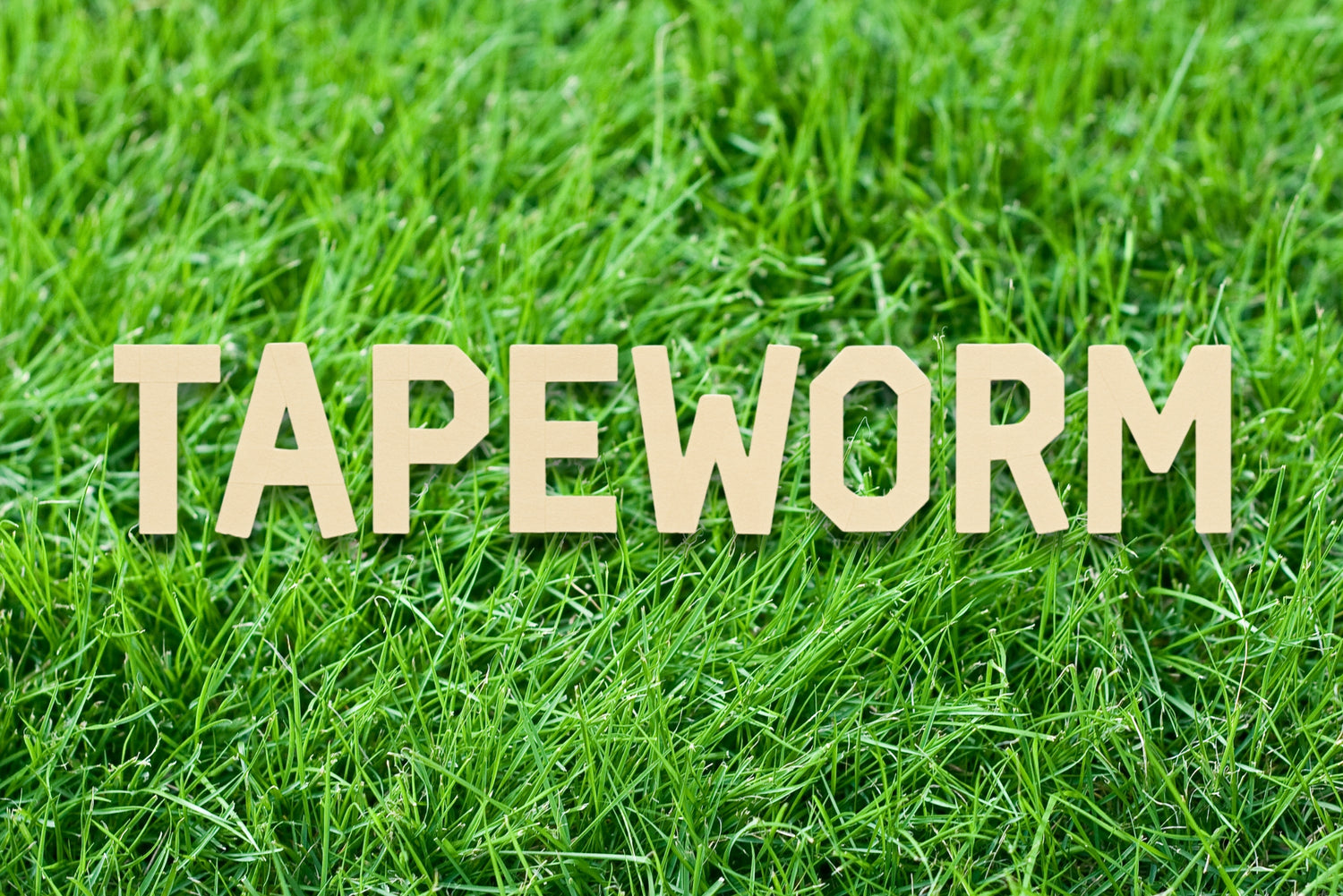
The Tail of the Tapeworm
Tapeworms are intestinal parasites that steal nutrients and can damage the gut lining of chickens. Backyard and free-range flocks are particularly at risk because most poultry tapeworms rely on invertebrate hosts, such as beetles, ants, flies, slugs, snails, and earthworms, to complete their life cycle.
This guide explains which tapeworm species affect New Zealand poultry, how to recognise infection, how to reduce exposure, and what treatments are available under New Zealand’s veterinary medicine rules.
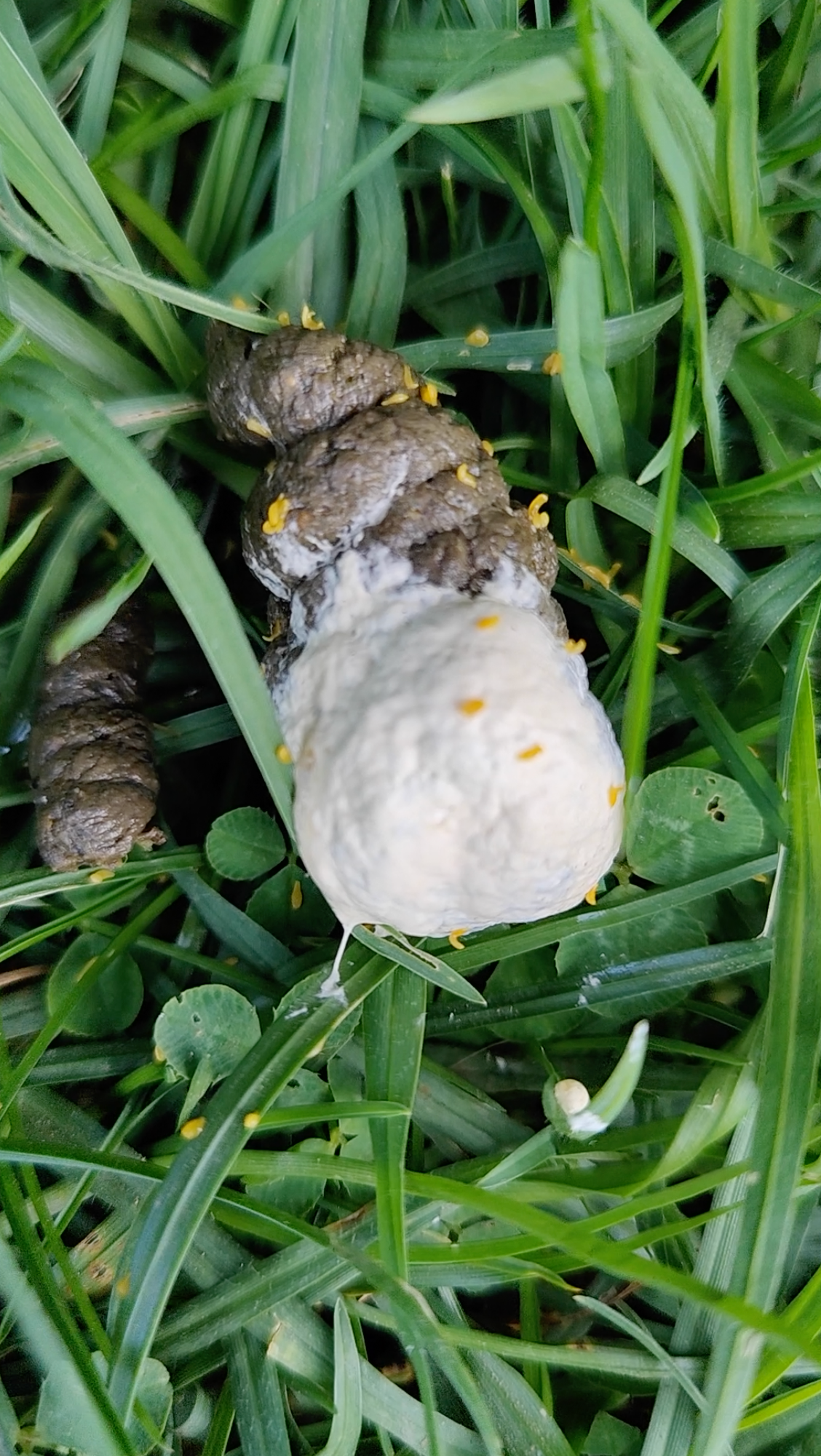
Pictured: Tapeworm segments called proglottids.
Why Tapeworms Matter
Tapeworms compete with your birds for nutrients, leading to:
- Poor body condition or slow growth
- Reduced egg production
- Occasional diarrhoea or vent soiling
- In young or heavily infected birds, weakness and even death
In droppings, you may see small white/yellow rice-like segments (proglottids) with larger species, though some of the minute species show no visible signs.
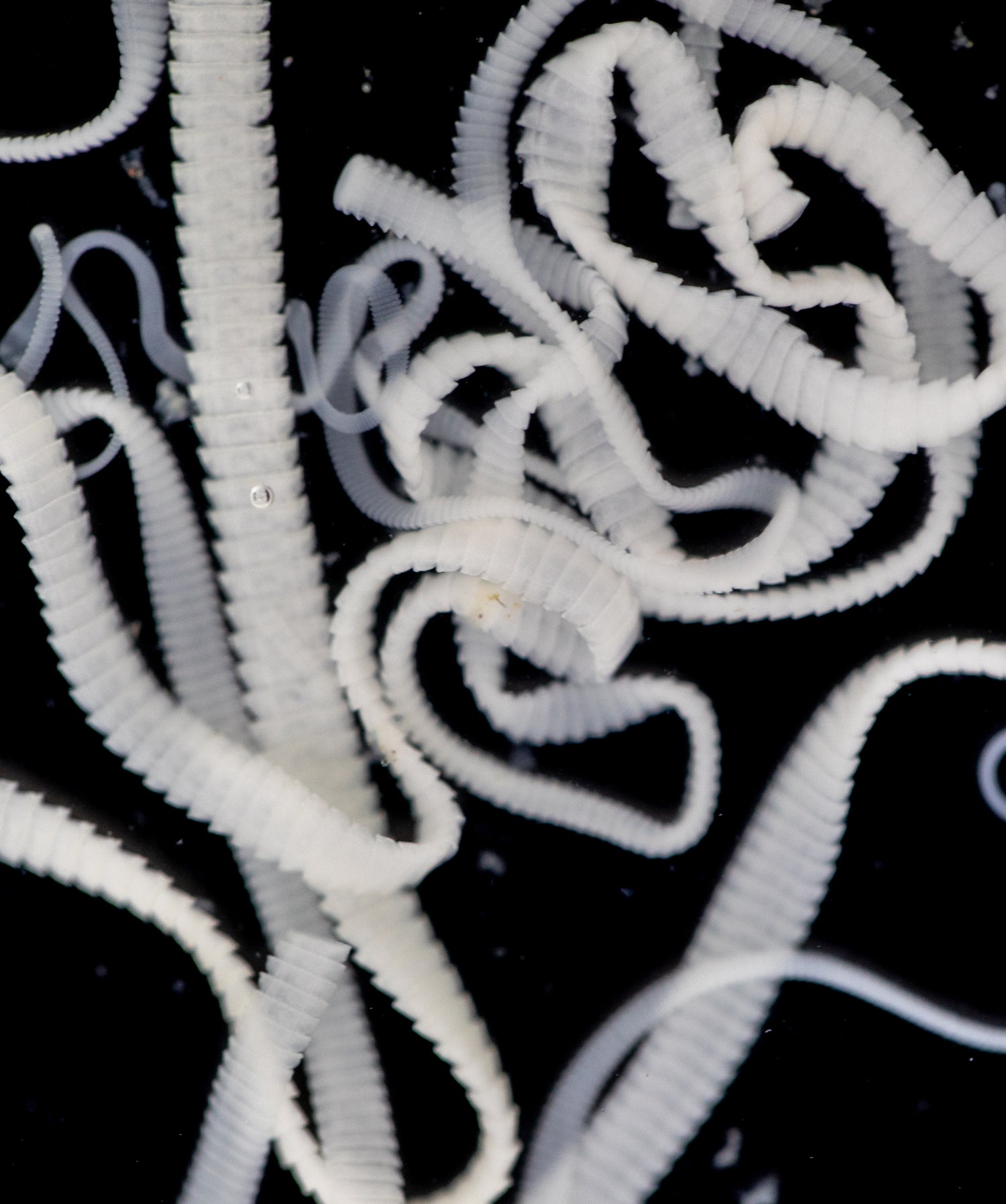
Tapeworm Species Found in New Zealand
Several tapeworms occur in New Zealand chickens, with varying effects:
1. Davainea proglottina (minute chicken tapeworm)
Tiny—0.5 to 4 mm; lives in the upper intestine. Transmitted by slugs and snails. Can cause severe gut inflammation and deaths in young birds.
2. Raillietina echinobothrida (nodular tapeworm)
Up to 30 cm; spread by ants and beetles. Causes nodular lesions in the intestine (“nodular tapeworm disease”).
3. Raillietina tetragona
Similar in size to R. echinobothrida; common in free-range flocks but generally less damaging.
4. Raillietina cesticillus (broad-headed tapeworm)
Lives in the small intestine; uses darkling beetles around litter and feed. Good beetle control reduces risk.
5. Choanotaenia infundibulum
5 – 20 cm; transmitted by houseflies and beetles. Fly control around coops is key.
6. Amoebotaenia spp.
Very small (2 – 4 mm); uses earthworms as hosts. Risk increases when chickens forage after rain.
Diagnosing Tapeworm Infection
1. Faecal testing – A veterinary lab can check droppings for tapeworm eggs or egg packets. Because shedding is intermittent, a negative test doesn’t rule out infection.
2. Segment identification – If you see segments, collect a few in saline and ask your vet to identify the species.
3. Post-mortem confirmation – In deceased birds, examination of the intestines can confirm species and location. Ask your vet before attempting a home necropsy.
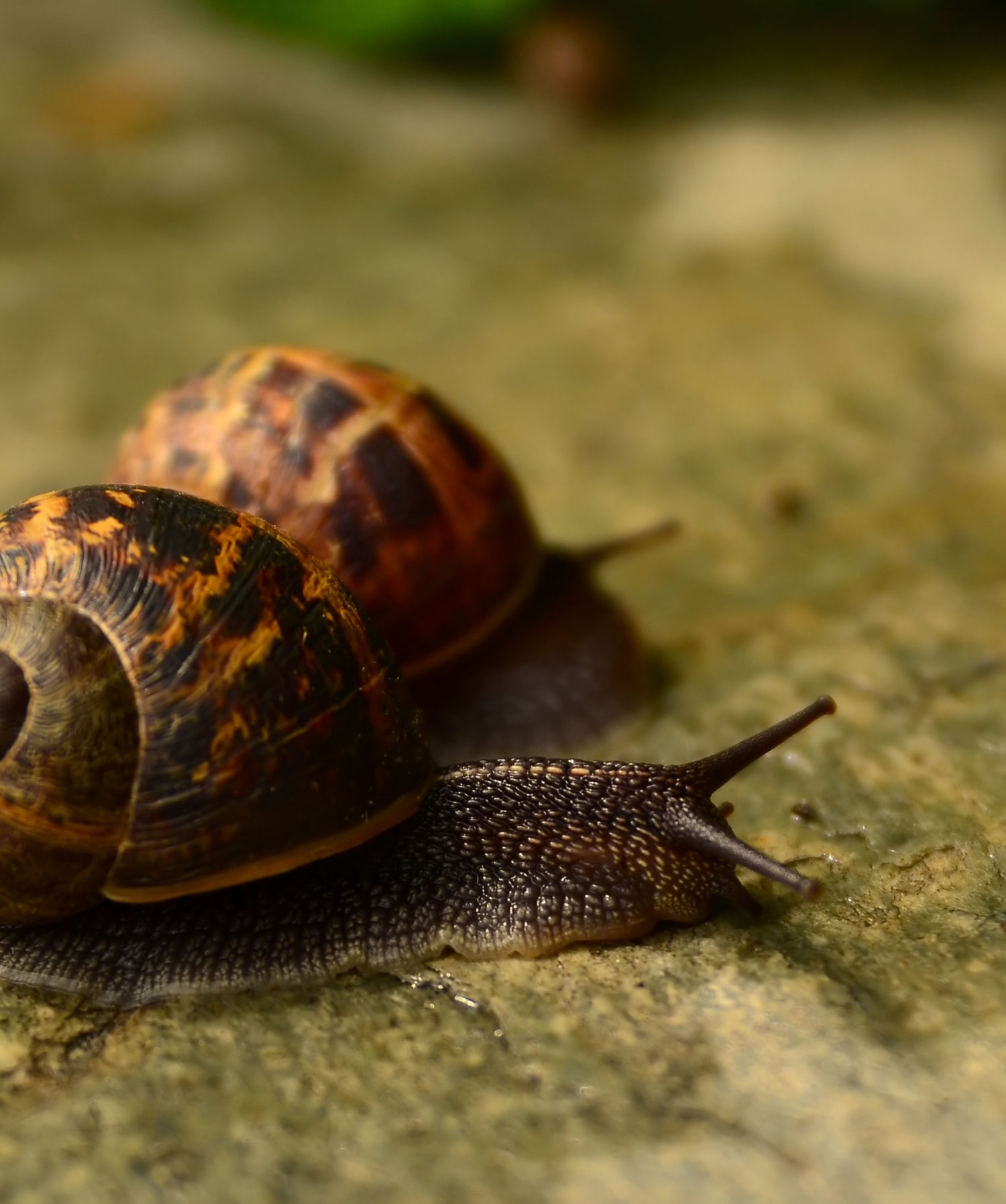
Reducing Tapeworm Exposure
The key to prevention is breaking the life cycle by managing intermediate hosts.
1. Coop and range hygiene
- Remove spilled feed and store grain securely.
- Keep litter dry; repair leaks and drainage issues.
- Manage manure to reduce flies.
2. Control intermediate hosts
- Slugs/snails: tidy garden edges, hand-pick after rain, or use iron phosphate baits in bird-safe stations.
- Beetles: keep litter turned and dry, remove old wood or piles, seal floor cracks.
- Flies: manage manure, hang traps outside the coop area.
3. Foraging strategy
- Avoid slug-heavy, damp areas after rain.
- Offer a clean, sunny day run with short grass and airflow.
4. Equipment and layout
- Use raised feeders and nipple drinkers to prevent damp patches.
- Keep coops bright, dry, and well-ventilated to discourage insects and worms.
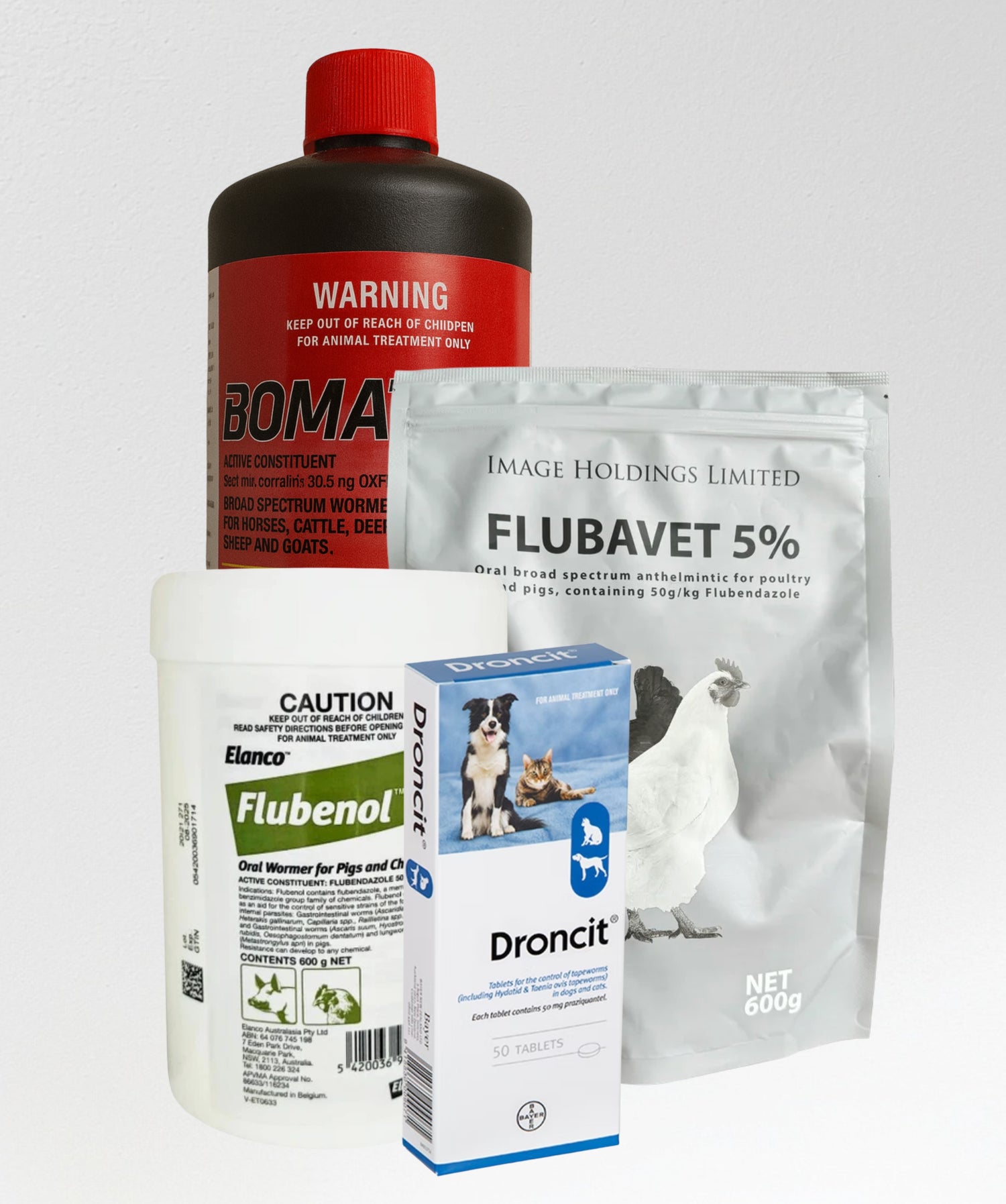
Treatment Options in New Zealand
Always follow NZ veterinary medicine regulations.
On-label:
- Flubendazole 5% (Flubenol and Flubavet): broad-spectrum wormer effective against many Raillietina species. Typically fed for seven consecutive days. Check your product label for specific instructions. We recommend checking your work with a fecal egg count 2 weeks after using this product as it can be unreliable due to it's mixing ratios.
Off-label (veterinary oversight required):
- Oxfendazole – often prescribed for mixed worm burdens including tapeworms.
- Praziquantel – highly effective against most tapeworm only, vet must determine withholding period.
- Niclosamide – historically used but less available, discuss with your vet.
Always follow NZ veterinary medicine regulations. All treatments must comply with withholding periods for eggs and meat, and any off-label use requires veterinary supervision.
A Simple Control Plan
-
1.Confirm the problem – Look for segments and submit a pooled faecal sample from several birds for testing.
-
2. Treat appropriately – Start with flubendazole; if issues persist or minute species are suspected, discuss praziquantel or oxfendazole with your vet.
-
3. Break the cycle – Improve hygiene and reduce access to slugs, snails, beetles, and flies while treatment is underway.
-
4. Check success – Re-test droppings or confirm no segments 10–14 days post-treatment. Maintain hygiene during warm, wet months when tapeworms thrive.
-
Note: No matter which tapeworm treatment you use, consistency is key. In free-range flocks, monthly treatments for up to a year may be necessary to reduce the overall tapeworm burden and break the reinfection cycle on your property.
Key Takeaway
Tapeworms in backyard chickens are common but controllable.
By combining accurate diagnosis, targeted treatment, and environmental management, you can protect your flock’s health and productivity while meeting New Zealand veterinary compliance standards.
For professional advice or laboratory testing, contact the Avian Empire team, we’re here to support healthy birds and confident keepers.

Parasite Essentials
-
Exzolt - 50ml
Regular price $189.00 NZDRegular price -
Aviverm - 50ml
Regular price $16.50 NZDRegular price -
Bomatak C *Prescription only medication*
Regular price $25.00 NZDRegular price

